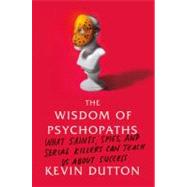
Dr. Kevin Dutton is a research psychologist at the Calleva Research Centre for Evolution and Human Science, Magdalen College, University of Oxford. He is a fellow of the Royal Society of Medicine and the Society for the Scientific Study of Psychopathy. Dutton is the author of Split-Second Persuasion. His writing and research have been featured in Scientific American Mind, New Scientist, The Guardian, Psychology Today, and USA Today. He lives in Oxford, England.
The New copy of this book will include any supplemental materials advertised. Please check the title of the book to determine if it should include any access cards, study guides, lab manuals, CDs, etc.
The Used, Rental and eBook copies of this book are not guaranteed to include any supplemental materials. Typically, only the book itself is included. This is true even if the title states it includes any access cards, study guides, lab manuals, CDs, etc.